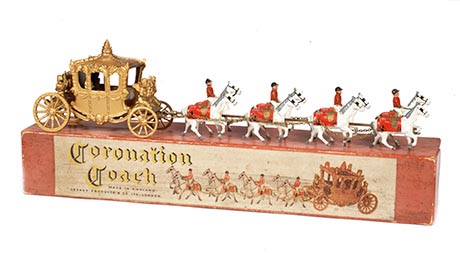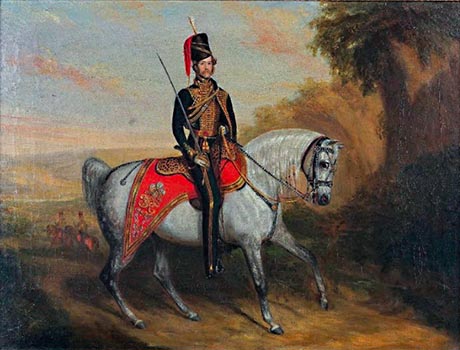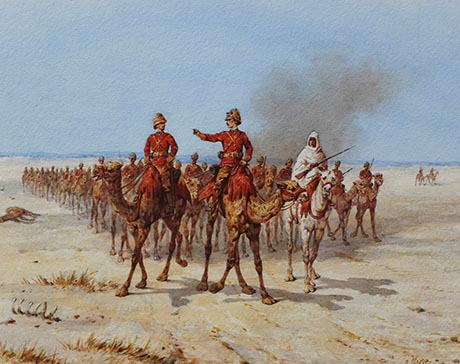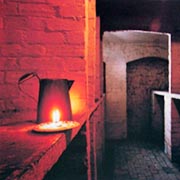Readers' contributions
May 2023, from a reader
I grew up in 57 Brunswick Square and, having gone to university abroad and in the UK, I left in 1969 when my parents moved to Withdean.
I went to St Margaret's C of E primary school in Brighton (demolished for the Brighton Centre) and when old enough to walk to school on my own, in the morning, I used to walk up Waterloo Street to the Post Office on the RHS, buy a Wagon Wheel or crisps (with salt in a blue wax paper twist), then out the back and off to school.
My after lunch detour (no school dinners in those days) was to walk through Whitbread's Brewery at the bottom of Waterloo Street on the RHS, hop over the trailing pipes, past the lovely shire horses that pulled the brewey dray, out the back and off to school.
There was also a toy shop in Waterloo Street and in the run-up to the coronation of Queen Elizabeth II, their window display included a small metal gold coach with a team of white horses and removable coachmen in red outfits. I really loved this toy and when I was diagnosed with measles on coronation day, my mother bought the coach toy to keep me amused while confined to bed and separated from my younger brother (whose 2nd birthday it was). I was six-and-a-half years old and can recall the day vividly.
Best wishes for your successful research, Krystyna Z-S

Laura Elston writing in The Independent, 26 April 2023: Seventy years ago, London-based die-casting business Lesney sold more than one million of its 11.8cm coronation coaches produced in 1952 ahead of Queen Elizabeth II’s coronation in 1953. Its sales success enabled Lesney to go on to fund the launch of the Matchbox brand – which has produced more than three billion toy cars to date.
May 2023, from a reader
I remember as a teenager in the late '60s early '70s, living in Brunswick Square, coming home in the early hours after a night out, calling in at Urbachs where the bakery would be baking next days bread and buying cakes, for a few pence, that had been left from the day before. Wonderful bakery in normal hours too.
Maisie
May 2023, from a reader
I have researched the history of the Bonham family, distant connections of mine. During the period from 1830 to 1856 several Bonhams were resident in Brunswick Square.
The facts are as follows.
In 1830 Mrs Charlotte Bonham (1780-1877) was widowed. Her husband had been Henry Bonham MP (1765-1830), who owned and managed East Indiamen and was a prominent financier of overseas trade in the City of London. After his death Mrs Bonham and her unmarried daughters, Harriet, Flora and Julia, and their little brother Charles Wright Bonham, moved to Brighton.
In 1831, her grown-up second son, Edward, then overseeing a copper mine near Tabriz in Persia, addressed a letter to her at Brunswick Square (no number) and in 1834 he addressed another letter to his older brother Henry (known as Harry), a cavalry officer, c/o his mother at 45 Brunswick Square. Later Edward Bonham (1809-1886) became a diplomat, being British consul first at Tabriz and later at Calais and Naples. Meanwhile Charles Wright Bonham (1817-1910) had left home for the Royal Naval College in Portsmouth. He retired from the service as Captain in 1870 and was later promoted Admiral.
In 1836, Mrs Bonham’s family was at 47 Brunswick Square (I see from your website that this was the same house, renumbered), the address given by her daughter Harriet in witnessing that year the will of Mrs Bonham’s son-in-law, Lord Garvagh.
The directories for Brighton in 1840 and 1846 show that, by then, Mrs Bonham had left the square and moved around the corner to 30 Brunswick Terrace. Her second son, the diplomat Edward, married from the family’s house at St Andrews old church in Hove in 1843.
Later Mrs Bonham moved to the country and died at Row Heath Cottage in Chailey, aged 97.
Her oldest son, Col. Harry Bonham Sr (1808-1856), was an officer in the 10th Royal Hussars who commanded C Troop at Queen Victoria's coronation in 1838. He retired as colonel after returning sick from India in 1849. He married Augusta Musgrave at St Andrews old church in 1850. (Recorded in the Brighton Herald, August 1850).

Mounted portrait of Colonel Henry F Bonham, 1846, British School.
Harry and Augusta Bonham lived first at Adelaide Terrace and then at 28 Brunswick Square, where he died in 1856. (There is an article on him in the Brighton Gazette, 21st February 1856.) His wife Augusta was born in Brunswick Square in 1830. After the early deaths of her parents she and her sisters lived under the care of her aunts Hasell, first at Tonbridge and then at 56 Brunswick Square (still there in the 1851 census).
After her husband died, Augusta and her two children moved to Carlton Hall in Suffolk where a few years later she married the Earl of Stradbroke. Her daughter Edith, born at Adelaide Terrace in 1851, became Edith Dickenson, a well-known reporter of the Boer War. Her son, Harry Bonham Jr (1852-1945), joined the Grenadier Guards and was chief signalling officer with the Guards Camel Corps on the ill-fated Nile Expedition to relieve General Gordon at Khartoum in 1884-85.

The Camel Corps During the Sudan Campaign, courtesy The Guards Museum
Augusta’s widowhood seems to mark the end of the Bonhams’ sojourns in Brunswick Square. Various relatives lived in other Hove streets later in the 19th century and Mrs Bonham's two youngest daughters both died in Hove, Flora Bonham at 23 Regency Square in 1900, Julia (Parry) at 7 Third Avenue in 1913.
Thanks for a great website. Andrew G.



